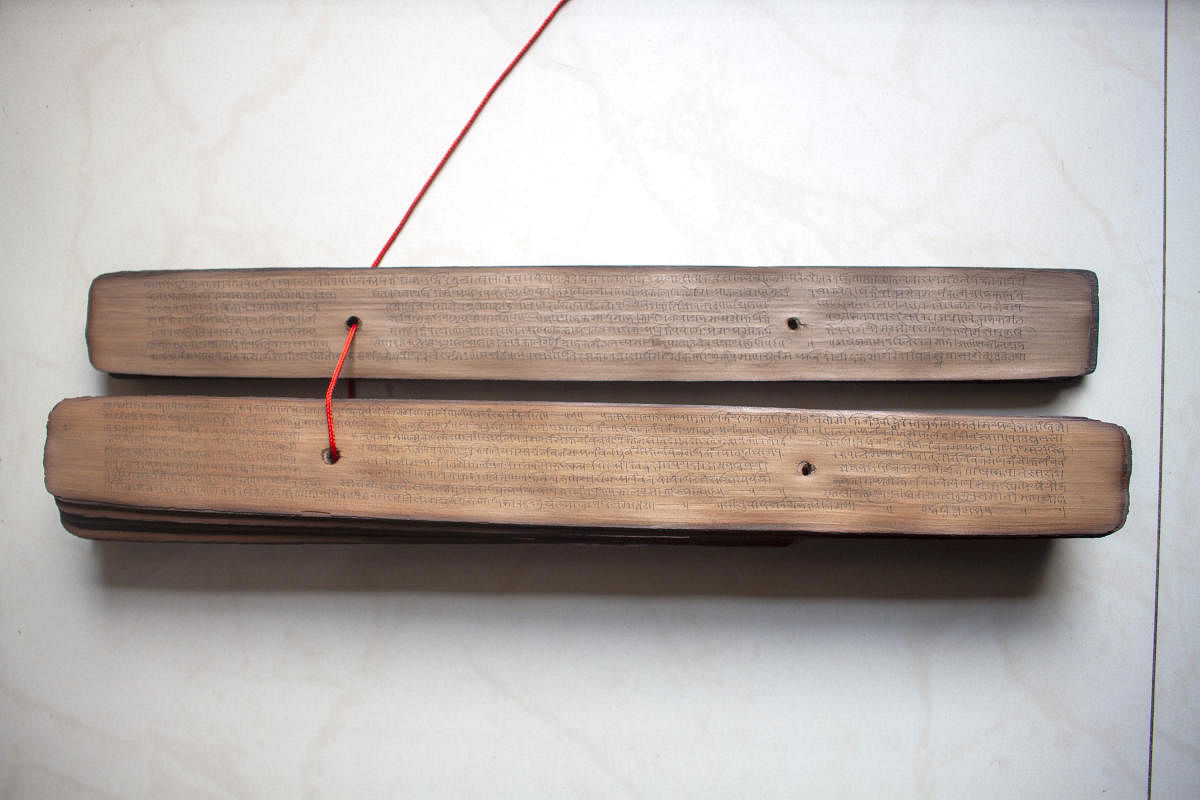
For as long as Seetharama Javagal could remember, his family possessed a set of carefully protected palm leaf manuscripts covered with tiny script. These folios had been lovingly maintained by his grandfather, a scholar and educator by profession.
Then, in 2011, some 13 years after his grandfather’s death, Javagal was startled to discover that these folios were actually astronomical documents from 400 years ago, originating from Sringeri in modern-day Chikkamagaluru district.
Remarkably, the manuscripts present a unique technique for charting celestial events and planetary positions, starting with the number of days elapsed since epoch. It not only reveals that ancient Indians in a remote part of the sub-continent were highly knowledgeable about the cosmos but also that they had achieved this through indigenous advances in complex mathematics.
The finding triggered a flurry of activity to restore the manuscripts and would eventually set off one astronomer on a six-year quest to translate the text for a modern public.
Javagal, who is now in his early 70s, said he first connected the dots of the papers’ historicity when the papers referenced the scholarly antecedents of the family.
“For years, while growing up, I had seen my grandfather preserving these bundles of palm leaf manuscripts in a wooden cupboard in our home, but my focus was on education and making a living. I never thought twice about these bundles,” Javagal said.
When he attempted to read the manuscripts, however, he hit a brick wall. Though the folios were in good condition, the text used an archaic dialect of Kannada and Sanskrit.
“The original script was in Nandinagari script that was used between the 11th and 19th centuries,” explained the noted astronomer Dr B S Shylaja, now an advisor to Jawaharlal Nehru Planetarium in the city. She has spent the better part of the last decade deciphering the history of the manuscript and decoding its mathematics and text.
It was only when Javagal approached a manuscriptologist in 2011 that he realised that the folios were astronomy related.
“I was determined to restore them,” he said, explaining that in the following year, he took them to the Indian National Trust for Art and Heritage (INTACH) at Chitrakala Parishat, where the folios were given preservation treatment, including a coat of citronella oil to deter insects.
Next followed a three-day journey by train to the National Mission for Manuscripts in New Delhi to digitise the documents as there was concern that further physical handling would result in their destruction.
“I took five bundles [all different manuscripts] with me on the train to Delhi in a bag and kept them clutched to my chest while I slept,” Javagal said, adding that the Mission scanned the folios in just three hours.
A book is born
It was after this that Javagal shared a copy of the scans with Dr Shylaja to affect a translation for a new book.
Dr Shylaja described the manuscript as a rare find. “This palm leaf manuscript, which was finished on 10 September 1604 CE (as per a colophon). It was written in an era when no printing press existed in the sub-continent, which meant they had been produced and reproduced by hand,” she said.
While she initially believed that a translation of the folios could be done rapidly, it would eventually take as many as six years to decipher the language. “The script was in tiny, small phrases and the book appears to have been a popular how-to guide for the residents of Sringeri to carry out their own astronomical observations,” she said.
The author of the manuscript has been identified as Shankaranarayan Joisaru (Kannada) and the work is largely a commentary on an earlier work by another astronomer, Viddanacharya (Sanskrit). Dr Shylaja noted that the manuscript “brings to light two experts spaced apart by two centuries.”
Shankaranarayan Joisaru’s eventual descendant was Sringeri Kulapati Shankaranarayana Joyisaru — Javagal’s grandfather.
Ancient helpbook
The manuscript explains the method for obtaining the mean positions for planets, deriving the true positions of all planets (including perigees and the nodes), offering calculations to determine eclipses and even developed a graphical method for obtaining the timings, magnitude and points of ingress and also carrying out a reversal of direction to match it with the view in the natural sky.
This information can now be found in a new book co-authored by Dr Shylaja and Javagal, Ganitagannadi: A Karana Text of 1604 CE on Siddhantic Astronomy in Kannada.
For Dr Balachandra Rao, historian of Indian astronomy and ex-director of the Bharatiya Vidya Bhavan’s Gandhi Centre of Science and Human Values, the manuscript is testimony to the knowledge of bygone generations.
“Except for the element of physics and its behavior on celestial bodies, our ancestors knew a great deal about astronomy largely independent of Europe, through mathematical calculation — much as what the ancient Greeks did,” he said.
However, Dr Rao said that the interesting thing about India’s pioneering astronomical advances was that much of them were prompted by religion.
“The pursuit of astronomy in the subcontinent showed the brilliance of the Indian mind, even though it was intended to bulwark religious beliefs and inquiries into aspects such as heaven and hell. This religious focus inadvertently helped advance the realm of astronomy in India,” he added.
Dr Shylaja, meanwhile, notes that not only has this intact manuscript created insights into an aspect of astronomical discoveries in previous centuries, it also suggests that other scientific discoveries may also be out there, waiting to be discovered.
“Since these manuscripts were largely restricted to circulation within scientific circles, common people did not really know about the important work being done by these people. It is only now that we are starting to discover about their achievements. It is possible that there are other gifted astronomers also out there who have been lost to obscurity,” she said.